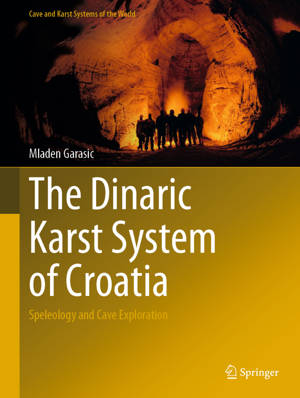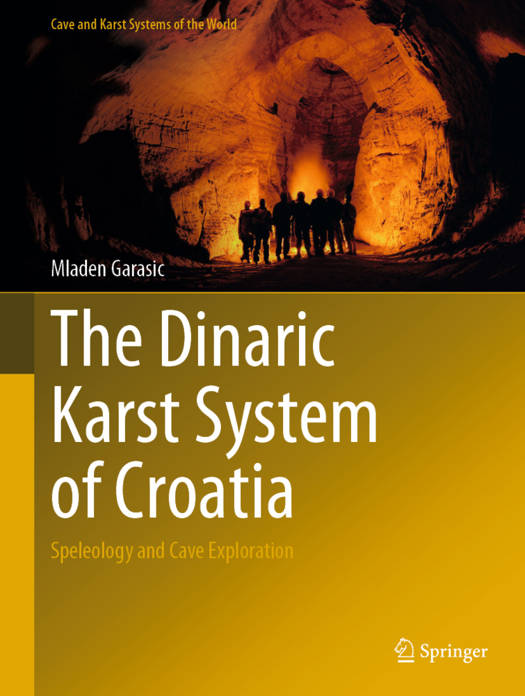
Je cadeautjes zeker op tijd in huis hebben voor de feestdagen? Kom langs in onze winkels en vind het perfecte geschenk!
- Afhalen na 1 uur in een winkel met voorraad
- Gratis thuislevering in België vanaf € 30
- Ruim aanbod met 7 miljoen producten
Je cadeautjes zeker op tijd in huis hebben voor de feestdagen? Kom langs in onze winkels en vind het perfecte geschenk!
- Afhalen na 1 uur in een winkel met voorraad
- Gratis thuislevering in België vanaf € 30
- Ruim aanbod met 7 miljoen producten
Zoeken
€ 244,45
+ 488 punten
Uitvoering
Omschrijving
This book offers readers a thorough introduction to the Dinaric Karst System in Croatia. As the first comprehensive book on the country's caves and karst, it presents a wealth of fascinating photographs from its karst underground. To date, ca. 12,000 caves and pits have been confirmed in Croatia, approximately 35% of which contain constant groundwater. Knowing the amount, direction and quality of groundwater that has been discovered in caves of the Croatian karst allows us to predict with greater certainty the hydrogeological situation of some karst areas where no special drilling or borehole measurements were performed.
In the process of building highways in the country's karst regions over the last thirty years, thousands of caverns (speleological features without natural entrances) were discovered and thoroughly explored. All of them were geologically mapped, surveyed, and photographed in detail. Extensive research was systematically carried out inCroatian karst regions on sections of roads, highways, cuttings, slides, tunnels, bridge foundations, viaducts, etc., while creating ca. 800 kilometers of highways (such as the Zagreb-Rijeka highway, Zagreb-Split-Dubrovnik highway, Y-Ipsilon of Istria semi-highway, Rijeka-Rupa highway, Zagreb-Zadar semi-highway, and the Rijeka bypass). Some of these caverns contain major chambers like in the "Sveti Rok" tunnel and in some of them, like in the "Vrata" tunnel, it was even necessary to build a bridge. This bridge is the longest one in the world built in a tunnel over a cavern.
The book describes this and many more features of the cave exploration of the Dinaric Karst System of Croatia, making it a valuable resource for researchers, engineers, cavers, and all other readers interested in karst.
In the process of building highways in the country's karst regions over the last thirty years, thousands of caverns (speleological features without natural entrances) were discovered and thoroughly explored. All of them were geologically mapped, surveyed, and photographed in detail. Extensive research was systematically carried out inCroatian karst regions on sections of roads, highways, cuttings, slides, tunnels, bridge foundations, viaducts, etc., while creating ca. 800 kilometers of highways (such as the Zagreb-Rijeka highway, Zagreb-Split-Dubrovnik highway, Y-Ipsilon of Istria semi-highway, Rijeka-Rupa highway, Zagreb-Zadar semi-highway, and the Rijeka bypass). Some of these caverns contain major chambers like in the "Sveti Rok" tunnel and in some of them, like in the "Vrata" tunnel, it was even necessary to build a bridge. This bridge is the longest one in the world built in a tunnel over a cavern.
The book describes this and many more features of the cave exploration of the Dinaric Karst System of Croatia, making it a valuable resource for researchers, engineers, cavers, and all other readers interested in karst.
Specificaties
Betrokkenen
- Auteur(s):
- Uitgeverij:
Inhoud
- Aantal bladzijden:
- 437
- Taal:
- Engels
- Reeks:
Eigenschappen
- Productcode (EAN):
- 9783030805869
- Verschijningsdatum:
- 29/09/2021
- Uitvoering:
- Hardcover
- Formaat:
- Genaaid
- Afmetingen:
- 216 mm x 292 mm
- Gewicht:
- 1270 g

Alleen bij Standaard Boekhandel
+ 488 punten op je klantenkaart van Standaard Boekhandel
Beoordelingen
We publiceren alleen reviews die voldoen aan de voorwaarden voor reviews. Bekijk onze voorwaarden voor reviews.









